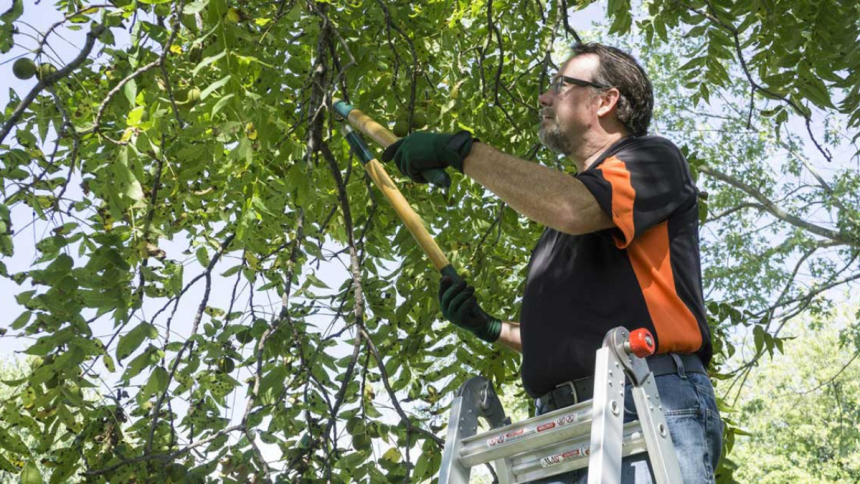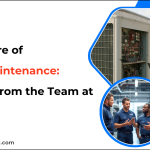Why Regular Tree Trimming Matters
Trees are some of the most valuable assets you can have in your outdoor space. They provide cooling shade in summer, slow down winter winds, and support wildlife with food and shelter. But beyond these ecological bonuses, regular care is an investment in their longevity and safety. Branches left unchecked may grow too close to structures, power lines, or frequently-used paths, putting people and property at risk. Even healthy-looking limbs can become brittle or diseased inside and snap unexpectedly during a storm. For families who want dependable advice, turning to local experts in Tree Trimming in Etlan or within their communities can help ensure safety and proper technique. Experienced tree care professionals understand the balance of pruning to promote healthy growth while removing hazards before they require emergency attention.
Not only do healthy, well-maintained trees ward off costly disasters, but they also boost neighborhood-wide benefits. According to the National Park Service, urban trees are vital for public health, offering everything from cleaner air to mental health benefits. Their research shows that neighborhoods with well-tended trees experience less air pollution, lower surface temperatures, and even reduced stress among residents. However, these benefits rely on regular care, including removing dying limbs, thinning dense crowns, and eliminating structural defects, which keeps them robust and thriving for decades.
When Is the Best Time to Trim Your Trees?
The timing of tree trimming makes a world of difference. While it seems convenient to tackle pruning whenever you notice an issue, how trees respond varies with the seasons. Late winter through early spring is best for major trimming for most species. During dormancy, trees conserve energy and are less susceptible to the spread of pests and diseases; cuts made during this period heal faster and encourage vigorous new growth in spring. Master gardeners and tree care specialists affirm these advantages. Recommendations from The Arbor Day Foundation highlight that this approach also allows you to efficiently spot and address dead or unstable branches, as leaves are off the tree and visibility is high.
Of course, not every situation fits perfectly within the schedule. If you notice a cracked limb overhanging your driveway or see a branch interfering with electrical wires, prompt action is required, sometimes regardless of the season. Emergency trims may be necessary after storms or heavy winds to prevent further hazards. In these urgent scenarios, always place personal safety above all and contact certified professionals when work becomes dangerous or complex.
Recognizing When Your Tree Needs Attention
- Dead, dying, or visibly diseased branches can fall without warning, injuring people or damaging property.
- Branches encroaching on power lines, rooftops, or high-traffic walkways are urgent hazards.
- A canopy so dense that sunlight can’t reach grass, shrubs, or flower beds below, leading to bare patches and poor plant growth.
- Trees showing signs of distress, such as leaning at odd angles, bark splitting, large cavities, or soft, rotting spots at the trunk’s base.
Early intervention is essential to prevent minor issues from spiraling out of control. A sparse canopy, stunted leaves, or off-season color changes can signal trouble brewing inside the tree. Regularly checking trees after storms or early spring and fall can help spot issues before they escalate, allowing for timely and effective trimming.
Essential Tools for Safe Tree Trimming
The tools you use in tree trimming are as crucial as your timing and techniques. Start with hand pruners for small twigs—these deliver precise cuts without damaging the tree. Loppers are best for branches between one-half and two inches thick, allowing you to reach a little higher and work with extra leverage. A sturdy pruning saw is the safest and cleanest option for any limb thicker than two inches.
Personal safety gear is non-negotiable when tackling tree work. Thick gloves protect your hands from thorns, splinters, and sharp bark, while safety glasses guard against falling debris. A hard hat and steel-toed boots cover your basic personal protective equipment (PPE). Although some homeowners use extension poles or ladders for inaccessible branches, these activities are risky without proper experience and secure setups. Always weigh the risks, and if the work exceeds your comfort or physical capabilities, schedule a professional inspection.
How to Trim Trees Safely and Effectively
- Assess the tree: Walk around and examine it from all sides. Identify which branches require removal, especially those that are dead, diseased, or creating problems by rubbing against each other or nearby structures.
- Make precise cuts: Always cut just outside the branch collar. This is where the tree can most rapidly heal and seal up the wound, defending itself against infection.
- Cut in the right spot: Avoid making flush cuts that sit flat against the trunk or stubs that stick past the collar. Both can provide entry points for bacteria and insects, increasing the risk of decay.
- Work methodically: Regularly step back to view the overall profile. This ensures every cut supports the tree’s natural, balanced form while preventing lopsided or weakened growth.
- Clean up: Remove clippings right away. Compost small branches and leaves, or bundle and dispose of larger debris according to local guidelines. Prompt cleanup keeps pests away and prevents trip hazards for your household.
Trimming can be profoundly satisfying work—judicious cuts today yield stronger, lusher, and safer trees for years to come. However, avoid pruning trees too close to electrical lines or requiring climbing without using professional safety equipment; leave these riskier jobs to experienced crews.
The Value of Professional Tree Trimming
While many homeowners can expertly handle routine trimming for younger or smaller trees, situations involving great height, proximity to utilities, or unseen damage below the surface call for professional expertise. Arborists understand tree biology deeply and can detect subtle symptoms of hidden diseases, root issues, or insect infestations that a layperson might miss. Many are insured and follow strict safety guidelines, adding layers of protection for you and your property.
Reputable industry leaders emphasize safety above all else. Adhering to industry-established safety standards helps minimize the chances of personal injury or property damage. Arborists also come equipped with advanced tools such as harnesses, lifts, rigging gear, and chainsaws maintained for professional use, allowing safe and efficient work on jobs of any complexity. While professional trimming comes at a cost, the investment often saves money and stress in the long run by preventing structural damage or the spread of disease.
Environmental and Aesthetic Rewards
Tree care delivers dividends that extend far beyond your lot lines. Healthy, pruned trees anchor landscapes, provide privacy, and create a welcoming environment for birds, squirrels, and pollinators. Curb appeal is another immediate perk—a well-shaped tree can transform a front yard, making properties stand out in any neighborhood and raising home values by as much as 10-15%. Industry and real estate studies support these benefits, demonstrating that investing in landscape health is also a wise financial decision.
From the tree’s perspective, regular trimming means less competition among branches for sunlight, nutrients, and water. A well-ventilated canopy helps foliage dry quickly after rain, reducing the risk of fungi or bacteria taking hold. For homeowners committed to sustainability, this ongoing care builds resilience within the local tree canopy, improves stormwater management, and creates a habitat that thrives for decades.
Practical Tips for Homeowners
- To catch issues early, walk your property and inspect trees at least twice a year—spring and fall work best.
- After intense storms, check for cracked limbs, dangling branches, and root upheaval.
- Gentle trimming each season helps young trees develop a strong, well-balanced structure that will last a lifetime.
- Don’t remove more than a quarter of a tree’s branches in one year to avoid shocking or weakening it.
- At the first hint of disease, pest infestation, or trunk damage, contact a certified arborist for an assessment and a long-term care plan.
Smart, planned trimming is at the heart of vibrant, lasting landscapes. By embracing careful tree care practices and seeking expert advice when needed, homeowners can keep their trees thriving, creating shade, clean air, natural habitats, and beautiful scenery for their families and neighbors to enjoy for generations.
Lynn Martelli is an editor at Readability. She received her MFA in Creative Writing from Antioch University and has worked as an editor for over 10 years. Lynn has edited a wide variety of books, including fiction, non-fiction, memoirs, and more. In her free time, Lynn enjoys reading, writing, and spending time with her family and friends.















